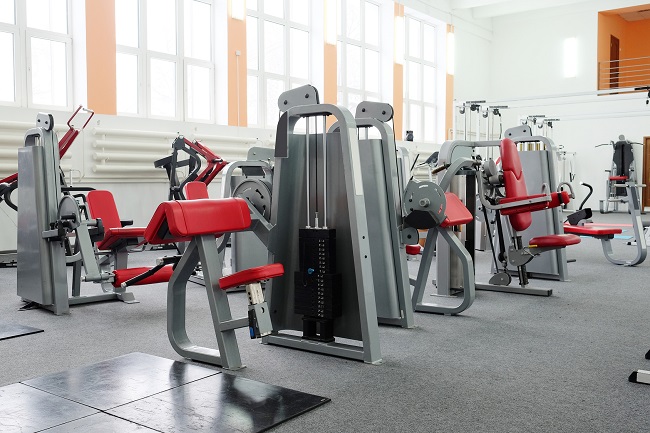I don’t know about you, but when I was a member of my local gym in Northampton, I found it really hard to make time to go. Like a lot of us I started out with the best of intentions, but soon found the monthly fee coming out of my bank account for absolutely no reason at all. For me, the issue really was about time and not a lack of motivation. What with a full time job and three kids to run around after I just didn’t have the hours in the day! And then a friend suggested I try putting in my own gym in my spare room at home. That way I could use when the kids were safely tucked up in bed, without the need of a babysitter! I was amazed at just how easy it was – with a little bit of forward planning – so I thought I’d share my tips with you.
It’s a big misconception is that you have to go to the gym in order to develop your body fully. You really can build a safe and effective home gym right inside your house that will give you great results—maybe even faster than joining the gym.
Training at home has a lot of benefits. Working out in the gym can sometimes be very distracting. People talk to you, machines are occupied and people are slamming weights all around you. When you train at home, there are no distractions. And you can set up your gym however you like. Just be sure to answer these questions before you begin building.
1: HOW MUCH SPACE DO I NEED?
Space is the major seminal factor in building your home gym. Ideally you want a garage, basement or spare bedroom. These all make perfect workout rooms. You’ll need enough room to fit your basic equipment in – you should be able to fit an Olympic barbell in at a minimum.
You also need to be aware of your flooring. If you live in a block of flats, it might not be wise to set up an area for deadlifts, unless you live on the ground floor.
Be aware of any windows. Make sure they’re not in the way of where you’ll be setting up your equipment. Make sure the room is properly ventilated to keep you cool in the summer and warm in the winter, although you could use portable heaters and fans. An example of a bad space would be a hallway or walkway of any type.
2: HOW MUCH WILL IT COST?
It can get pricey if you allow it to. But remember, at first it’s an investment, but once you’re using it every day it will quickly make it a bargain compared to a gym membership. Aside from avoiding the enhancement fees that some gyms charge, you’re also saving on the cost of transporting yourself to and from the gym.
Give yourself a budget. You can have a great home gym for under a couple of hundred pounds. First, determine what equipment you want and need.
My essentials are:
Olympic barbell and weight plates
Squat stand with adjustable set up
Adjustable dumbbell
Adjustable bench that goes decline, incline and flat
Cardio equipment (elliptical, treadmill, bike or even something as simple as a jump rope)
The equipment you buy will be based on how much space you have and how much your budget allows for. If you have a double garage and a large budget you can build an insane gym! But by the same token if you only have a small room and budget you can still construct a gym that will give you awesome results.
Once you’ve determined what equipment you’re getting . . . it’s time to bargain shop! Utilize sites like Gumtree and Ebay where you can find great equipment for pennies! Have patience when shopping for equipment and wait for that bargain.
3: WHAT ROUTINE SHOULD I DO IN MY NEW GYM?
You don’t need a tonne of variety in your training program to get results. If you’ve purchased a basic squat stand with an adjustable bench and an Olympic barbell, you can do pretty much any routine you like! The basic lifts that you should be using are squats, deadlifts, bench press, rows, overhead press, pull-ups and curls. In the ‘70s people trained with all basic free weights and got amazing results! The key is to be creative and use simple compound movements in every workout.
